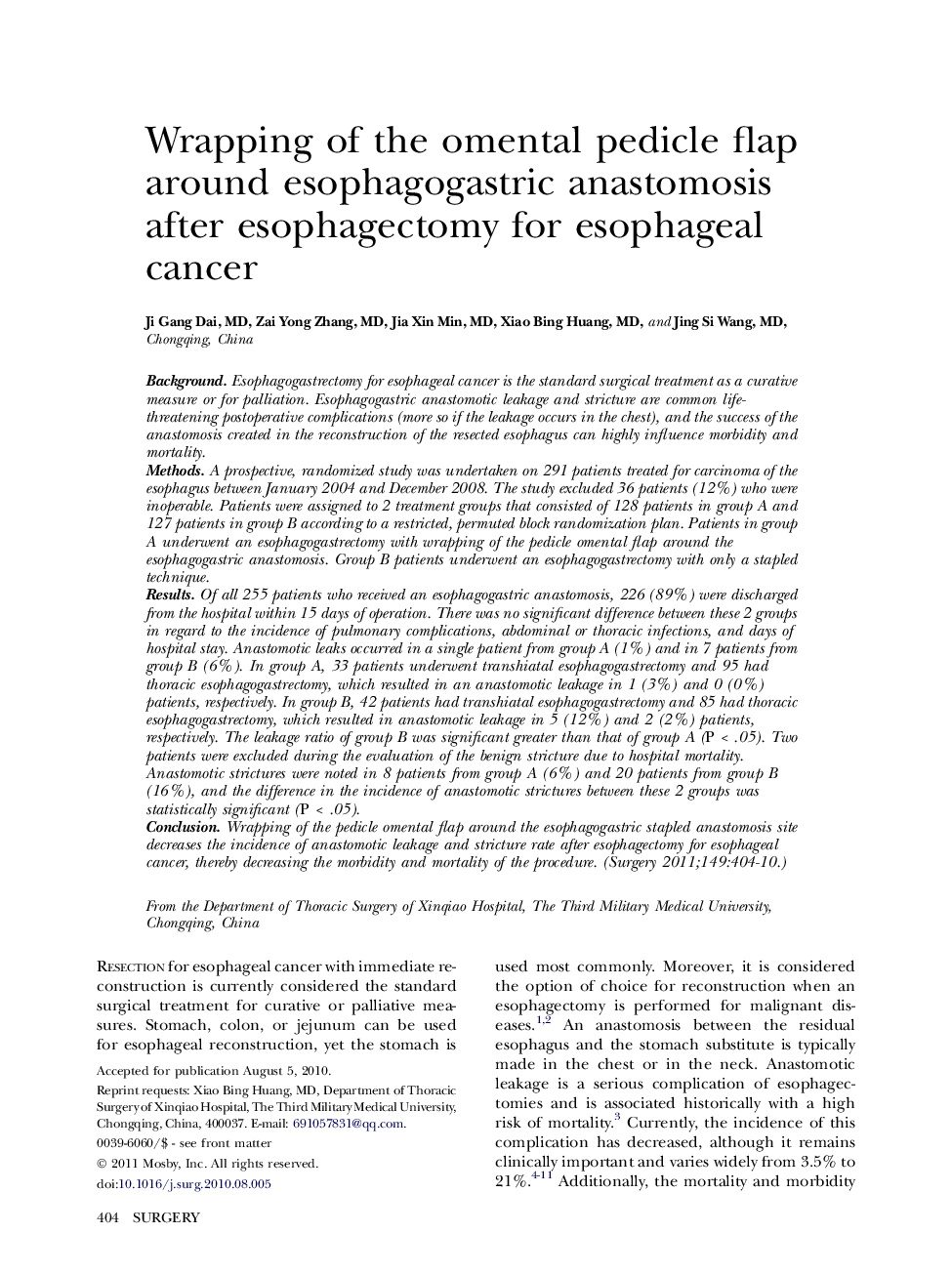| Article ID | Journal | Published Year | Pages | File Type |
|---|---|---|---|---|
| 4308175 | Surgery | 2011 | 7 Pages |
BackgroundEsophagogastrectomy for esophageal cancer is the standard surgical treatment as a curative measure or for palliation. Esophagogastric anastomotic leakage and stricture are common life-threatening postoperative complications (more so if the leakage occurs in the chest), and the success of the anastomosis created in the reconstruction of the resected esophagus can highly influence morbidity and mortality.MethodsA prospective, randomized study was undertaken on 291 patients treated for carcinoma of the esophagus between January 2004 and December 2008. The study excluded 36 patients (12%) who were inoperable. Patients were assigned to 2 treatment groups that consisted of 128 patients in group A and 127 patients in group B according to a restricted, permuted block randomization plan. Patients in group A underwent an esophagogastrectomy with wrapping of the pedicle omental flap around the esophagogastric anastomosis. Group B patients underwent an esophagogastrectomy with only a stapled technique.ResultsOf all 255 patients who received an esophagogastric anastomosis, 226 (89%) were discharged from the hospital within 15 days of operation. There was no significant difference between these 2 groups in regard to the incidence of pulmonary complications, abdominal or thoracic infections, and days of hospital stay. Anastomotic leaks occurred in a single patient from group A (1%) and in 7 patients from group B (6%). In group A, 33 patients underwent transhiatal esophagogastrectomy and 95 had thoracic esophagogastrectomy, which resulted in an anastomotic leakage in 1 (3%) and 0 (0%) patients, respectively. In group B, 42 patients had transhiatal esophagogastrectomy and 85 had thoracic esophagogastrectomy, which resulted in anastomotic leakage in 5 (12%) and 2 (2%) patients, respectively. The leakage ratio of group B was significant greater than that of group A (P < .05). Two patients were excluded during the evaluation of the benign stricture due to hospital mortality. Anastomotic strictures were noted in 8 patients from group A (6%) and 20 patients from group B (16%), and the difference in the incidence of anastomotic strictures between these 2 groups was statistically significant (P < .05).ConclusionWrapping of the pedicle omental flap around the esophagogastric stapled anastomosis site decreases the incidence of anastomotic leakage and stricture rate after esophagectomy for esophageal cancer, thereby decreasing the morbidity and mortality of the procedure.
